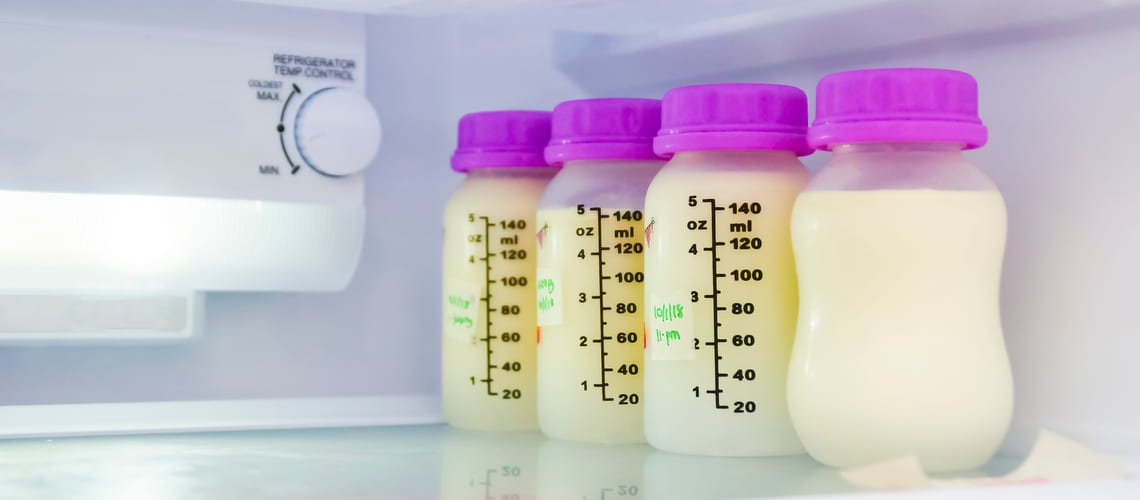
Storing breast milk in the refrigerator, freezer and at room temperature
Breast milk is the best source of nutrients for a child in terms of nutrition. If you are lucky enough to have plenty of milk, you should consider storing your milk. Breast milk can be stored in several ways. Although breast milk may lose some of its benefits after a certain period of storage, it is still the best source of food for a breastfeeding baby. Freezing breast milk for storage or storing breast milk in the refrigerator is quite common. Is reheating breast milk appropriate? Is it possible to heat breast milk in the microwave? How long does breast milk last at room temperature?
Perhaps the first thing you should ask yourself is why storing breast milk is actually useful. In some cases, women pump their milk into a supply so that they can feed the baby from a bottle and not directly from the breast. This solution is also practical when traveling or in places where you don't want to breastfeed in public. If you have stored milk, your partner can also feed the baby, as long as he warms the milk properly. It may happen that at some point you will not be able to breastfeed (illness, infection, injury, medication), stored breast milk is a great help in that case. You can also use breast milk to make snacks, purees or porridges. Therefore, milk storage is important in certain cases, and remember that having a few bags or bottles of breast milk in the freezer is certainly not harmful.
Breast milk storage and safety
The World Health Organization (WHO) itself informs about the beneficial effects of breast milk, which considers breast milk to be the best and natural source of infant feeding, which cannot be fully replaced by any artificial formula. Despite the fact that, compared to freshly expressed breast milk, certain live cultures disappear from the milk during storage, the storage of breast milk is safe and completely normal. However, it is important that certain principles of proper storage and the heating process are followed. The whole process starts when milk is pumped from the breasts. Strict adherence to hygiene is the alpha and omega, but it is not worth the risk of giving your baby spoiled breast milk.
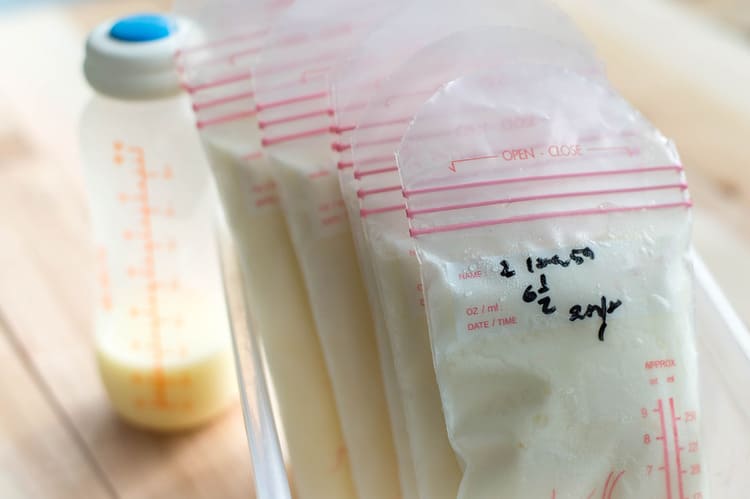
Breast milk pumping
Breast milk pumping itself can be realized in several ways. Manual breast pumps are available, but electric breast pumps are much more popular and efficient. Thanks to them, the process is faster and more pleasant for many mothers. You can also try manual suction. In any case, it is necessary to observe the principles of sterility and maximum cleanliness. Don't forget to wash your hands or breasts. The expressed milk is then stored in special bottles or breast milk bags. The aspirator and storage containers must be sterile.
Some experts recommend that the first 5 to 10 ml be sprayed outside the container during spraying and subsequent storage due to possible bacterial contamination. Never fill containers or bags to the maximum. Milk expands when stored in the freezer, so it is advisable to keep the level in the container at least 2 to 3 cm below the maximum scale. Some breast milk bags and containers take this fact into account when filling.
Begin pumping if you feel that your breasts are full and you do not need to breastfeed the baby at the moment. Pumping is also suitable if you want to support the stimulation of milk production or if you simply have extra milk and want to have it in stock in case someone has to replace you during feeding.
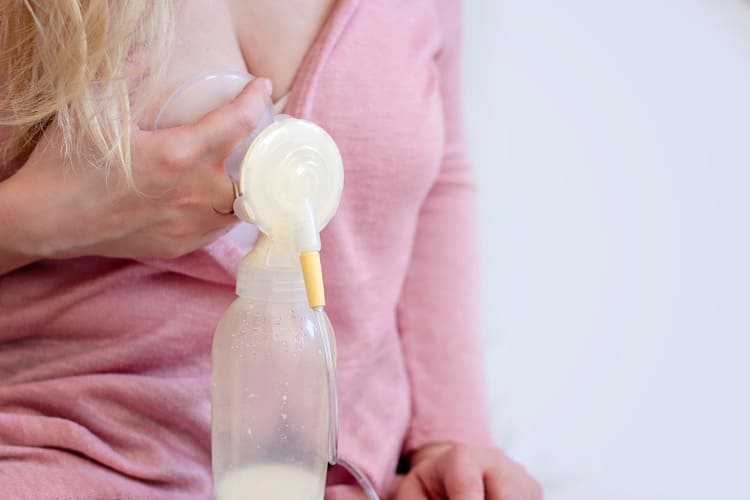
Bottles and bags for breast milk
Expressed milk must be stored in closed containers without harmful substances, so that the milk does not pick up odors or flavors from the surrounding environment. Breast milk bags are suitable for storing in the refrigerator and freezer. There are several types from several manufacturers, while they can differ in shape, design and, above all, volume. On the market, you can find bags for breast milk with a volume of, for example, 150 ml, 180 ml, 200 ml or 250 ml. They are made of special materials (most often polypropylene) without harmful BPA substances. The bags are intended for one-time use only.
From a more durable point of view, it is advisable to use bottles or containers for breast milk. The advantage of containers and cans is that you can reuse them for storage. Some containers are even compatible with breast milk pumps and baby bottle warmers thanks to adapters. If you are not limited by the capacity of the freezer, containers for storing breast milk in the freezer are a very suitable choice. They are also available in different volumes from 60 ml to 250 ml. When storing, it is always a good idea to write on the container the date when the milk was pumped and stored.
Storing breast milk in the refrigerator
Did you know that it is possible to store breast milk in the refrigerator for a certain period of time? Many mothers are concerned that it is inappropriate to store milk in the refrigerator, and its subsequent heating is responsible for the rapid deterioration of the quality of breast milk. How long to store breast milk in the refrigerator so that it does not spoil? In general, if the temperature in the refrigerator is up to +5 °C, you can store breast milk for 24 hours. Some sources even state that you can store freshly expressed milk at a temperature of up to +4 °C for up to 3 days. Also interesting are the research conclusions of scientists from the Dutch Universiteit Leiden, which showed that at a temperature of up to +4°C, breast milk can last up to 29 days without spoiling. However, it is generally recommended to keep the safe limit for a maximum of 3 days and for longer-term storage use the freezer.
The place in the refrigerator where you find the container with milk can also play a role. Do not place milk in the door of the refrigerator and also avoid placing it unnecessarily near other foods. The best thing to do is to place the container or bag of milk against the back wall of the refrigerator, where the temperature is lowest. If you fill half the container during pumping, you can mix the pumped milk with the newly sprayed milk during the next pumping and then store it again. However, it is also recommended to put the newly expressed milk in the refrigerator and cool it down. And only afterwards is it appropriate to mix the expressed milk. Some experts do not recommend mixing chilled breast milk and milk at body temperature.
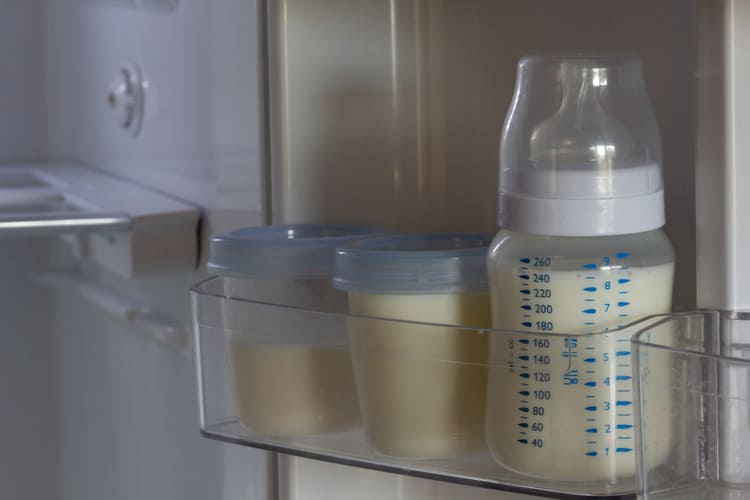
Storing breast milk in the freezer
It is recommended to store breast milk in such doses that the child will consume. This way you don't have to defrost the excess amount of milk from the stock. When mixing, it also applies that if you want to add freshly expressed milk to the frozen milk, first cool it in the refrigerator so that the frozen milk does not mix with breast milk at body temperature. Fill containers or bags for breast milk no more than three-quarters full so that the packaging is not damaged during expansion. It is gratifying that breast milk can be stored in the freezer for up to several months. At a freezer temperature of around -15 °C, you can store breast milk for 3 to 6 months. At an even lower temperature of -20 °C, up to around 6-12 months. Modern refrigerators and freezers today have thermostats. However, you can also check the temperature with a thermometer.
If you are going to store breast milk in the freezer, do so immediately after expressing. It is not necessary to cool the container in the refrigerator first. You can immediately put the container in the freezer. Set aside a separate drawer or space in the freezer for storing bottles, bags or containers with breast milk, where the containers with milk will not be in contact with other frozen foods. Freezing breast milk and subsequent consumption are completely safe.
Thawing and heating breast milk
The ideal way to thaw breast milk is gradually in the refrigerator. Transfer the container with milk from the freezer to the refrigerator, where the breast milk will thaw at a temperature of +4 °C within 12 to 24 hours. If it is necessary to thaw the milk faster, you can use an electric breast milk heater with a defrosting function or pour warm water with a temperature of up to 40 °C into the container and gradually thaw the milk in it. Defrosting at room temperature for 2 to 3 hours is also possible. Some experts do not recommend defrosting at room temperature. Completely thawed milk can be stored in the refrigerator for a maximum of 24 hours after thawing. As for breast milk from the freezer, if it has been thawed once, it is never advisable to refreeze it.
To heat the milk before consumption, you can use an electric heater, thanks to which you will heat the breast milk to the required temperature and there will be no danger of it overheating. Overheating milk destroys valuable nutrients and vitamins. The second option is also a water bath with a maximum water temperature of 40 °C, it is important to monitor the water temperature with a thermometer. The water must never boil and should not exceed the mentioned value of 40 °C when heated.
It is also true that if you take breast milk out of the refrigerator or thaw it, then heat it up and the child does not drink it all, do not pour the unconsumed milk, max. within 4 hours you can use it for the next feeding without heating. Leave it at room temperature. Reheating already warmed milk is not recommended. It is not recommended to heat breast milk in a microwave or in an electric oven due to the risk of overheating.
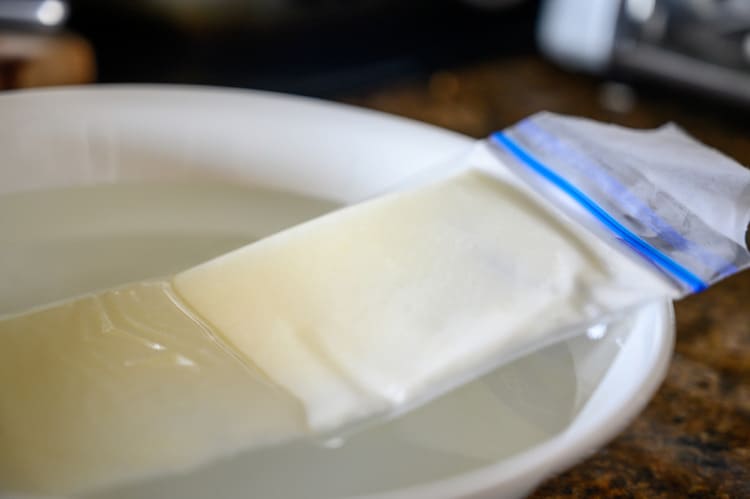
After thawing, the texture and smell of breast milk may be different. The reason is that breast milk also contains a fat component and the individual layers separate after thawing. Enzymes break down fats, and stored milk therefore has slightly different properties. However, this does not mean that breast milk has lost its nutritional value or is spoiled. Mothers report that the milk sometimes has a metallic or soapy aroma. Before feeding, mix the breast milk in a circular motion without shaking to combine the individual components.
Breast milk at room temperature - pay attention to the time
Storing breast milk at room temperature is definitely not one of the methods we recommend in the long term. Above all, it is about answering the question of how long breast milk will last at room temperature. The truth is that freshly expressed milk or warmed milk should be used within 4 to 6 hours if the room temperature is between 16 and 25 °C. If the room is heated to a higher temperature, do not underestimate it and rather give the baby a fresh dose directly from the breast or pour out the remaining milk and prepare a new dose.
Experiences
You can store breast milk in the refrigerator and for some time at room temperature, but according to mothers, the best option is to store it in the freezer. Milk should be frozen in the bottles intended for it, or in bags, and thawed at room temperature or in a water bath.
The most frequent questions - FAQ
Is it important for you to store breast milk? Do you want to know how to store expressed breast milk? Are you wondering if freezing breast milk is safe? In our article, we answer all important questions. However, if you want advice, join the discussion. We will be happy to help you. We will also be happy if you share with us your experiences, tips or advice that can help other parents.
How long to store breast milk in the refrigerator?
How to thaw breast milk?
How long does breast milk last at room temperature?
Is reheating breast milk appropriate?
What is the use of an electric thermos for breast milk?
Can I mix expressed milk?
Pridať komentár





